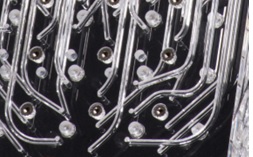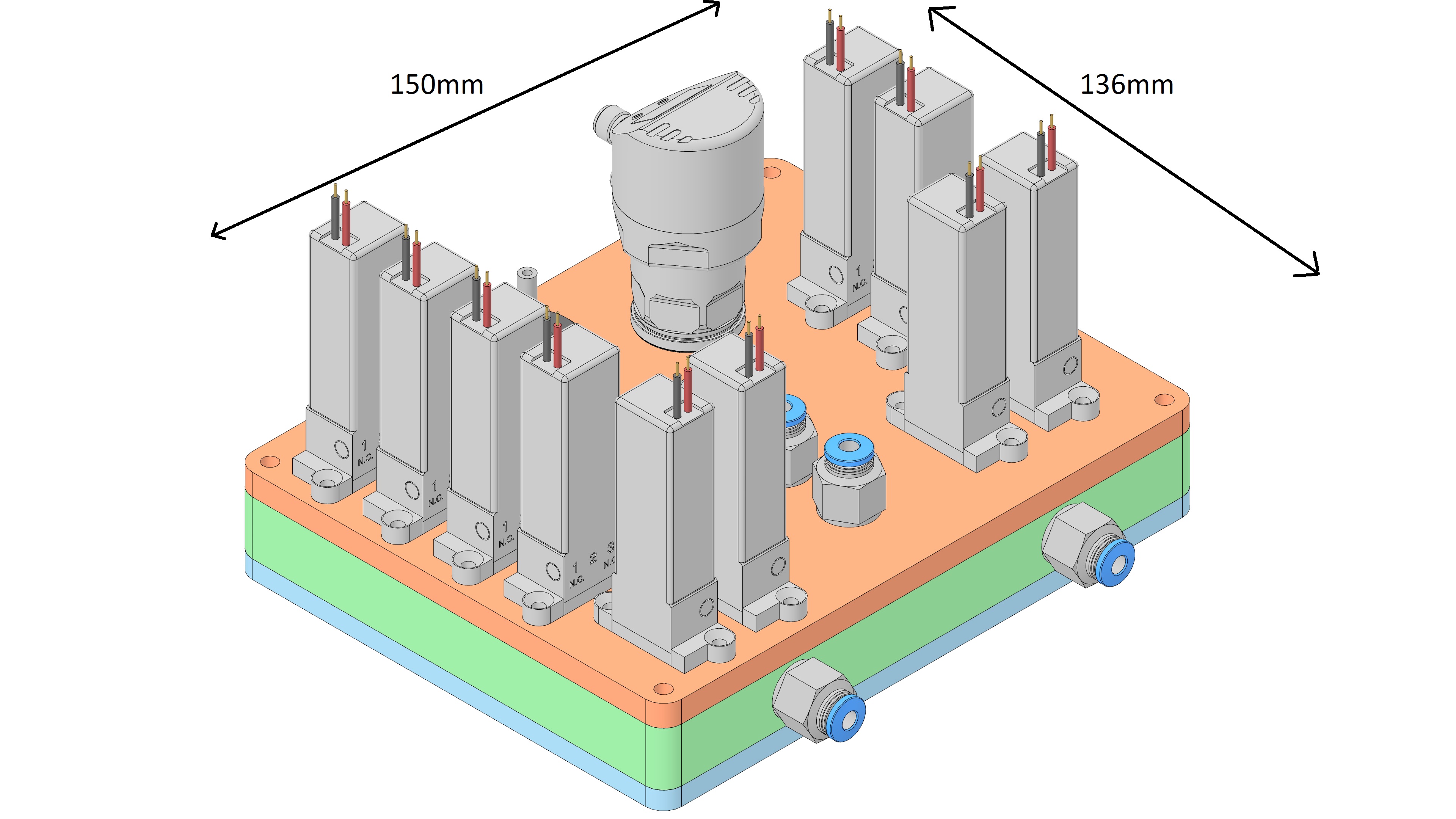Fluidic manifolds are well known as a great way to reduce system complexity, tubing, interconnects, potential leaks and simplify valve mounting in liquid and gas management applications.
Cross-Drilled Manifolds
Traditional Cross-Drilled manifolds have several key limitations:
- Straight Lines. As the channels are created from straight, drilled holes, the positioning of valves, connectors and other components are driven by what can be achieved through drilling and plugging, limiting options on placement, and taking up space.
- Intersections. Cross-drilled intersections tend to have sharp edges and sometimes burrs leading to flow restrictions, sudden fluid direction changes and greater turbulence. Intersecting more than two paths is challenging.
- Long, small channels. These are very limited with just drilling.
- Contaminants. With plastic manifolds, the use of cement to secure plugged holes can be a contaminant issue for medical/IVD biocompatibility.
- Channel shape and finish. The restriction of simple, straight, round channels is very limiting as many applications look for more complex geometries. Surface finish can also be a challenge.
- Volumes/Reservoirs. Additional components need to be added to the manifold.
- Cross-drilled manifolds are not suitable for microfluidic applications.
High Accuracy Diffusion Bonded Plastic Manifolds
 These multi-layer bonded plastic manifolds offer a massive amount of design flexibility in a single highly repeatable part, analogous to a PCB for fluids. Bonded at a molecular level, with similar properties to the parent material, manufactured in Acrylic / Plexiglas (PMMA) and Ultem (PEI).
These multi-layer bonded plastic manifolds offer a massive amount of design flexibility in a single highly repeatable part, analogous to a PCB for fluids. Bonded at a molecular level, with similar properties to the parent material, manufactured in Acrylic / Plexiglas (PMMA) and Ultem (PEI).
Advantages include:
- Channel paths. As channels are milled on individual planes prior to bonding, the design scope is vast, including interconnecting channels with other layers. Valves and components can be lined up neatly on a single surface for good serviceability, with the tube-like channels dealing with the complexity, resulting in a significant reduction in manifold size and assembly costs.
- Intersections. These can be smooth, curved channels with multiple paths and intersections at a single point. This provides a high level of control over the flow characteristics.
- Channel size. No restriction on lengths, channel widths and depths of 0.15mm are possible for microfluidic applications.
- Contaminants. Manifolds have no contaminants as no adhesives or cements are required.
- Channel shape and finish. Multiple channel profiles can be created, with expanding or contracting sections. Various surface finish options are possible.
- Chambers can be created within the manifold layers, omitting the need for additional, external volume components.
- The complexity that can be built into bonded manifolds and removed from the wider system is huge, dramatically reducing overall system complexity by the use of a single, repeatable component, far exceeding anything that can be achieved by cross-drilling.
Cross Drilled vs Diffusion Bonded Manifold
Both the manifolds below are for the same system application
Cross Drilled Manifold

- Footprint 254mm x 239mm
- Component Count = 65 parts
- External volume/reservoir components
- Assembly Time = 85 mins
- Test Time = 35 mins
- Poor serviceability
Carville’s High Accuracy Diffusion Bonded Manifold Alternative

![]()
 Footprint 150mm x 136mm (66% reduction)
Footprint 150mm x 136mm (66% reduction)- Component Count = 42 (35% reduction)
- Internally bonded volumes/reservoirs
- Assembly Time = 35 mins
- Test Time = 20 mins
- Weight reduction = 26%
- Cost reduction = 27%
- Good serviceability
For further information on bonded manifold design or to discuss an application, please contact visit Carville at www.carvilleplastics.com and follow us on https://www.linkedin.com/company/carville-ltd/



